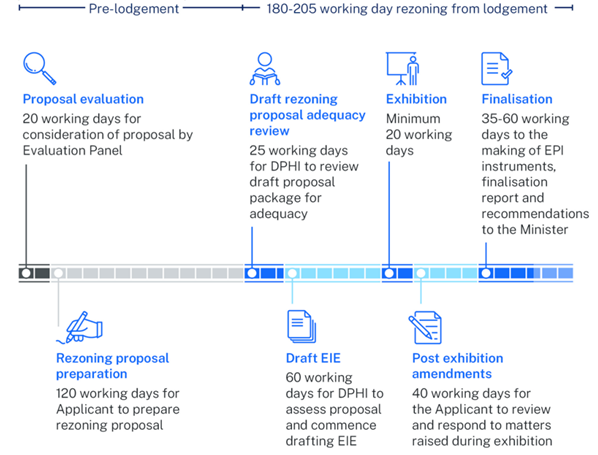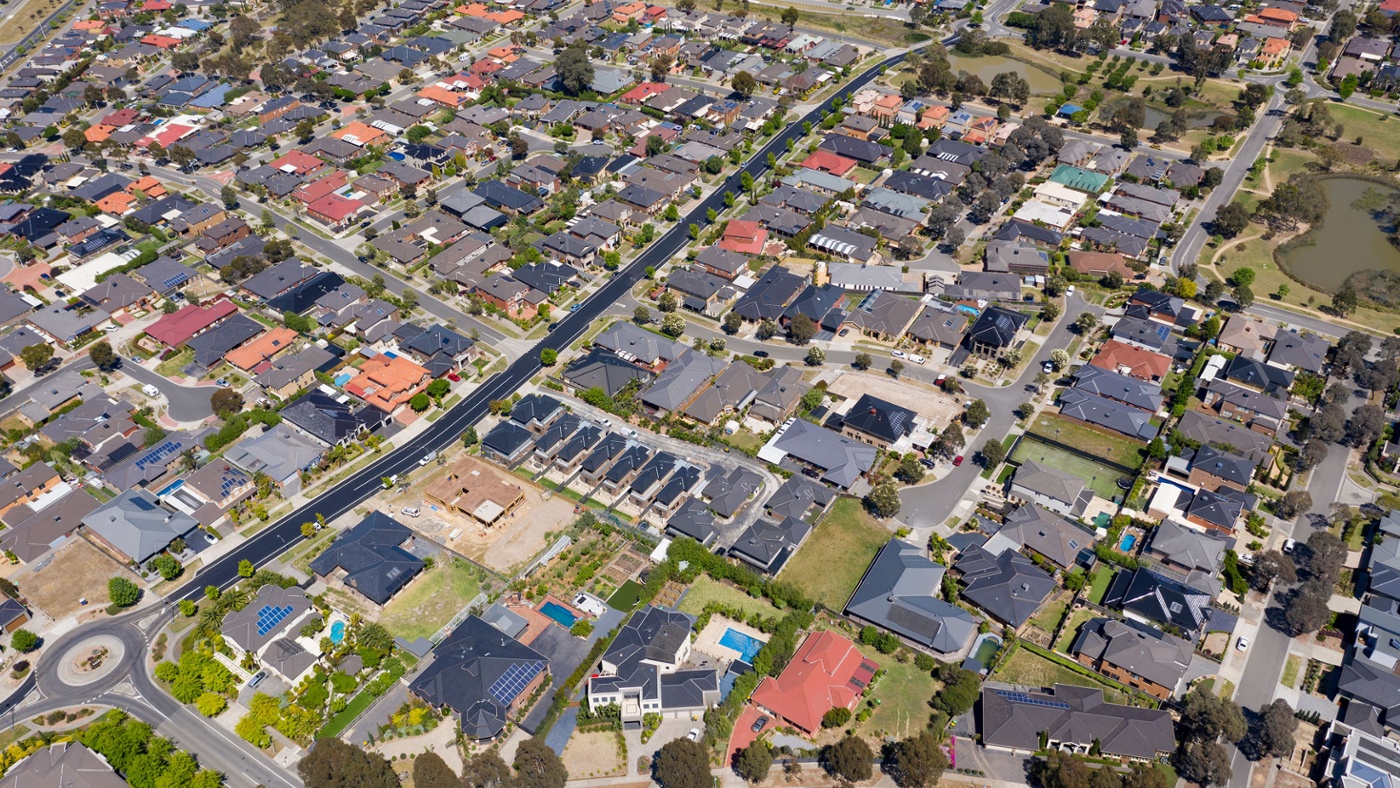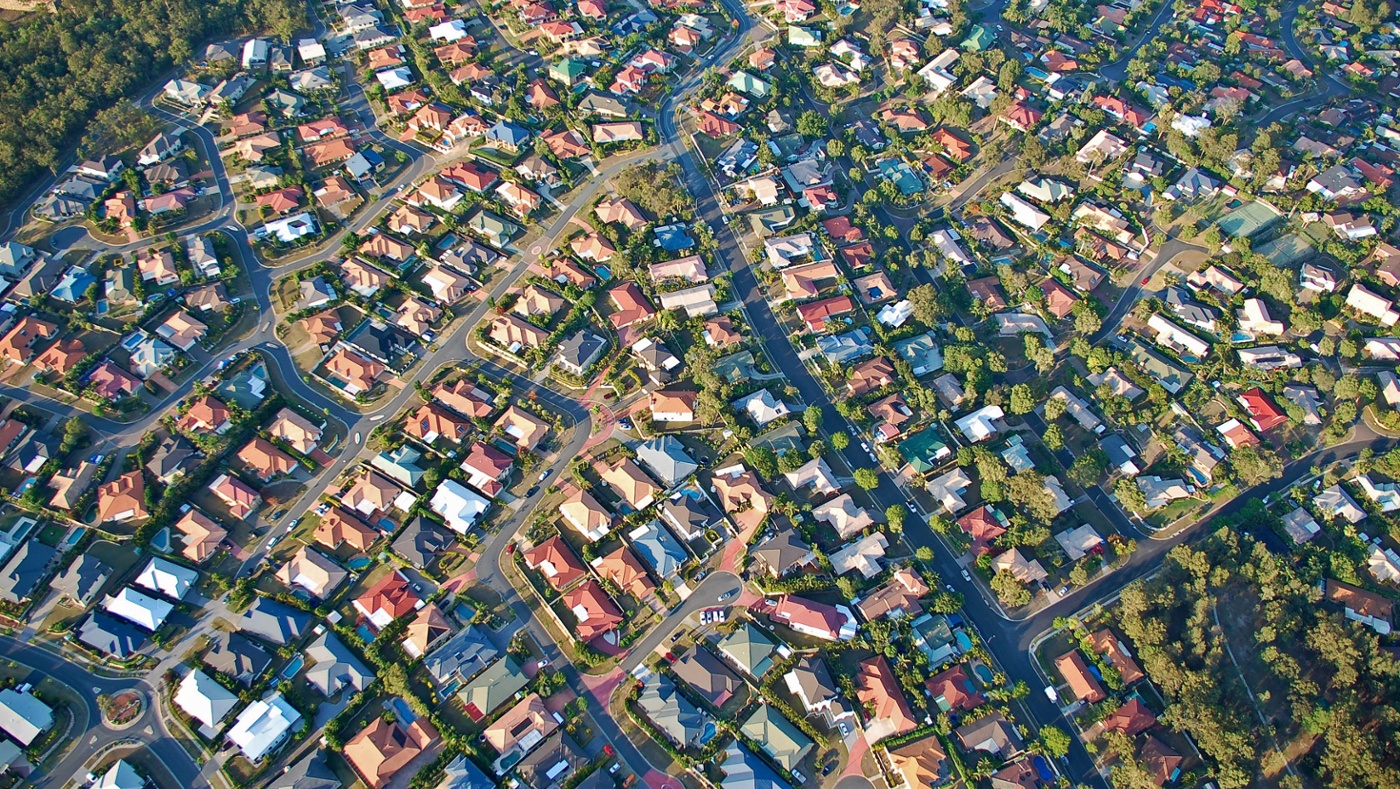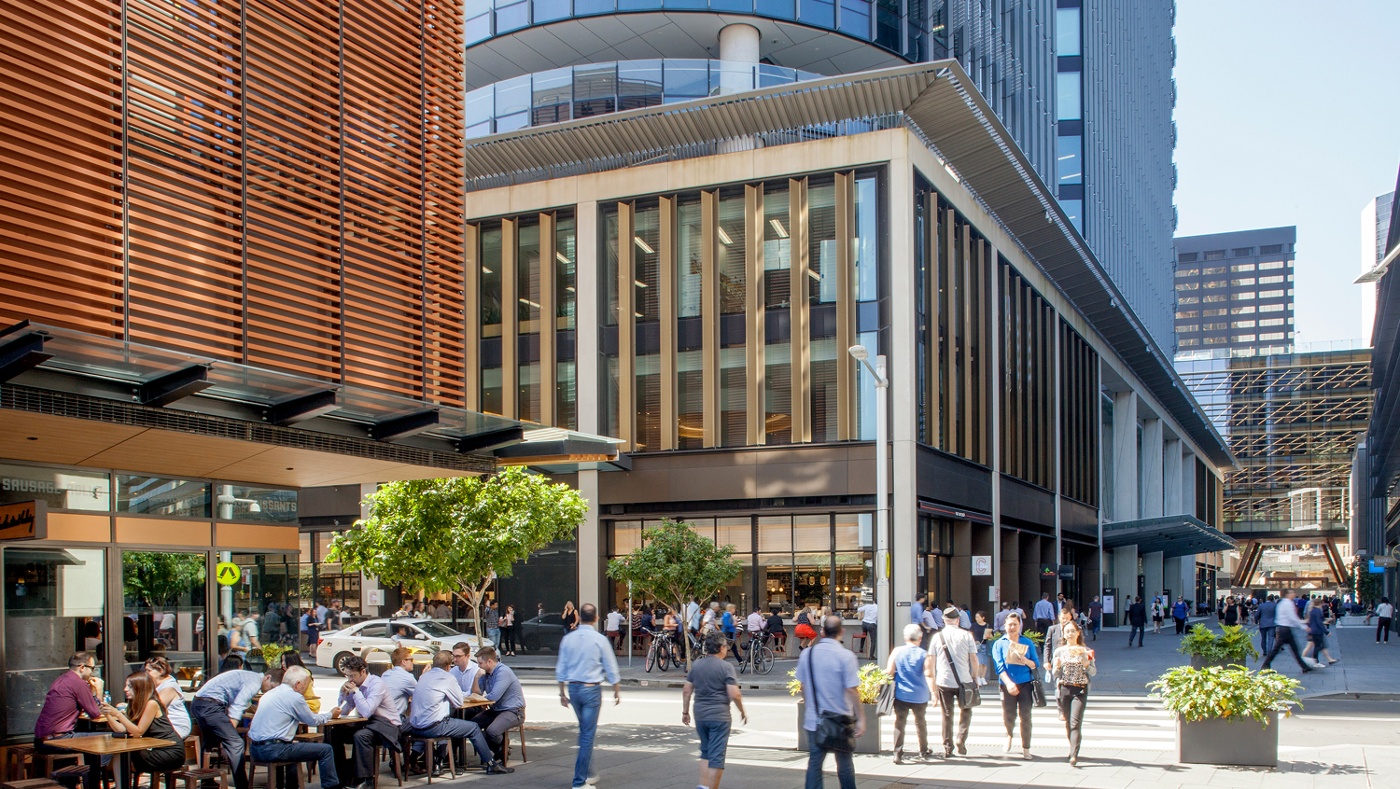Last week, the NSW Department of Planning, Housing, and Infrastructure (DPHI) released a new State Significant Rezoning Policy to little fanfare. In an unusual break from the status quo, media statements and press releases were nowhere to be seen.
The policy establishes a streamlined pathway for identifying and assessing land for rezoning proposals, focusing on the strategic delivery of housing and economic opportunities and aims to support the NSW Government's target of delivering 377,000 new homes by 2029. Conceptually, this policy is a meaningful step forward, but looking under the hood, is the policy all it is chalked up to be?
Overview
The policy outlines two distinct State rezoning pathways:
- State-led rezonings – Initiated and managed by DPHI, typically involving large-scale or precinct-level projects where the state government has a direct stake or where strategic intervention is necessary. In these instances, DPHI assumes responsibility for leading planning, studies, and community engagement, as we have seen with the Accelerated TOD Precincts.
- State-assessed planning proposals – Submitted by applicants and assessed by the DPHI. These proposals must demonstrate strategic importance or have experienced unreasonable delays in the planning system. Applicants are responsible for preparing high-quality proposals, including technical studies, and must meet specific timelines to progress through the process.
Site identification
Critically, applicants cannot nominate sites in any formal capacity. Instead DPHI will undergo a selection process based on existing proposals in the system and by targeting key land holdings. This will include continuous monitoring of proposals already in the system, and consideration of whether they are being unreasonably delayed. Additionally, twice a year (September and March) DPHI will identify potential sites for the evaluation panel to assess against the policy’s assessment criteria.
To be eligible, DPHI will consider sites that meet the minimum criteria outlined below and their capacity to positively contribute to the NSW Government’s housing and economic objectives:
- The proposal is of State or regional significance or the proposal has been unreasonably delayed in the planning system.
- The proposal is able to adequately address the relevant planning legislation, strategic plan, policies and Directions by the Minister.
- Other considerations:
- Potential time savings – how many assessment days will be saved through a State rezoning pathway.
- Scale – including number of homes/jobs to be delivered. Preference will be given to proposals that will deliver:
-
- 100 dwellings/lots in Regional NSW or 500 dwellings/lots in Metropolitan NSW
- 50 affordable housing dwellings
- Dwellings in a Renewable Energy Zone (REZ)
- 50 jobs in Regional NSW or 100 jobs in Metropolitan NSW
-
- Delivery confidence – how quickly will the project be realised. Preference will be given to proposals where the applicant can demonstrate that a development application is able to be submitted within 6 months of the rezoning finalisation.
- Location – the site is located in an area that is well located and serviced.
- Level of complexity – whether the proposal would benefit from a State rezoning pathway to resolve complexities such as coordinating multiple State agency stakeholders
Site selection and evaluation
Once identified, a thorough evaluation process on the suitability of the proposal will ensue, as follows:
- Site identification and selection – eligible sites are nominated internally or assessed based on strategic significance, as above.
- Initial meeting – addresses the site nomination, expectations under the Policy and the associated processes.
- Scoping proposals or candidate profiles – for new proposals, applicants are required to prepare scoping proposals in accordance with the LEP Making Guideline. For existing proposals, DPHI will prepare a candidate profile based on already prepared material that details the history of the proposal, including information on why the proposal has been unreasonably delayed.
- Site assessment and selection – a thorough assessment will be undertaken by an internal evaluation panel. Focus will be placed on evaluation criteria as follows:
- significant and meaningful public benefits are delivered, the site helps achieve current Government priorities and is aligned with State policies and land use strategies
- contribution to the Government’s 5-year housing targets
- provision of social and affordable housing
- any impediments to delivery can be managed and/or have a clear pathway to resolution
- investment is committed or available to deliver the rezoning
The panel will then make a recommendation on whether the proposal should proceed. If successful applicants will be notified and issued study requirements.
Positive steps
The policy replaces the former Rezoning Pathway Program and State-assessed Planning Proposal Industry Pilot announced in December 2022, both of which had limited application and limited windows of opportunity. Replacing these with a comprehensive and ongoing policy program is a positive step in the right direction. By nominally establishing clear criteria for what constitutes a ‘state significant’ rezoning, it ensures that all stakeholders – whether from the public or private sector – are aware of the expectations and requirements from the outset. The key challenge for DPHI will be ensuring that these criteria are consistently applied.
One of the most significant potential benefits is the policy’s ability to fast-track projects that meet State-level priorities. Specifically, direct recognition has been granted to government priorities which are not always recognised by local government. By focusing on areas with existing or planned infrastructure, the policy ensures that development is not only delivered quickly but also in locations that are primed to accommodate growth sustainably. Undoubtedly, these target timeframes of 180-205 working days from lodgement to finalisation are a key benefit of the policy (refer to Figure 1), and if met will deliver a much more streamlined rezoning process for significant projects

Figure 1: State-assessed rezoning process. Source: DPHI
Navigating the policy
Planning reform often comes with the promise of simplifying the process, and whilst exciting, this new policy has some potential shortcomings that may impact its effectiveness, including:
- No pathway for proponents to nominate their own sites
- A lack of amendments to the legislation and statutory framework for rezonings
- Increased pathway uncertainty.
Knowing that the policy is aimed at the delivery of housing in the short term, the policy would benefit from the inclusion of a formal nomination pathway as this would draw out owners that are ready and able to deliver the required housing. One need only look at the precursor to the policy, the State-assessed Planning Proposal Industry Pilot conducted in late 2022 where nominations from industry were plentiful and thorough, something that would no doubt be an enviable starting point to sift through proposals and deliver well located housing supply.
In relation to pathway, ideally, this policy should offer the kind of clear pathway that is available for State Significant Development (SSD). In this scenario proponents understand exactly who will assess their application and exactly what the environmental assessment requirements are upfront. Further, whether any given project constitutes SSD is laid out in clear terms, and automatically triggered, leaving little room for uncertainty of pathway.
Notwithstanding this room for improvement, how can a proponent best navigate the opportunities and challenges that come with the policy?
Submitting a site for consideration
Despite the lack of a formal pathway to site nomination, there is still opportunity for proponents with strategic sites to seek out selection as part of this State rezoning program with the support of Ethos Urban. If you have a planning proposal already in the system that is delayed or could be considered of state significance, reach out to discuss opportunities to document the consistency of the proposal with the nomination criteria and bring forward a suggestion to DPHI. This process is not time bound, so those potentially eligible (and particularly those that are ready to proceed through to development application and construction) should look to explore their options as soon as possible.
In the scenario that you possess a strategic site but no planning proposal has been lodged, DPHI has indicated a selection process will be undertaken in March and September next year. Rather than selecting sites randomly, DPHI will seek out those ready to undertake a rezoning and those who have demonstrated their consistency with the criteria. Accordingly, we can support proponents eager to be involved in the policy with developing a strategy, a scoping submission and meeting as necessary with DPHI to seek out nomination come March.
The new State Significant Rezoning Policy offers opportunities for fast-tracking projects. Understand the implications of the new policy and how it may affect your portfolio. Our team of expert planners, economists, social strategists, urban designers and engagement practitioners is here to help you navigate the process. We have extensive experience building compelling cases for rezonings and working productively with DPHI. Reach out today to discuss how we can assist.
The full policy can be accessed for viewing here.
Related Insights

How Immigration Shapes Housing Choices in Victoria?

Recognising Our People: 2025 Mid-Year Promotions

NSW Low and Mid-Rise Housing Reforms








